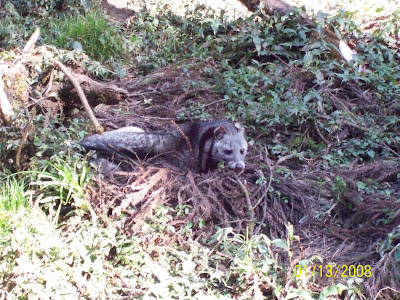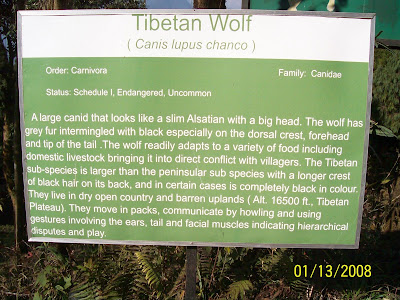
Samdruptse : South SIKkim
When you are in Namchi, you cannot help but notice the magnificent bronze structure watching you with, what you first see, a frown on his face, as if he disapproves of all that is going on beneath his gaze. You are, at once, drawn to Him as if he is summoning you to come before him. You cannot escape his sight anywhere. So what is it about Him that is so fascinating? You start to wonder and there lies your quest for knowledge and a way to gratify your curiosity.
The best thing about your search is that vehicles are easily available and cheap and the drivers, agreeable. The half an hour drive uphill makes you feel as if you are about to enter the gates of heaven. Of course, the transitions not always easy. The taxi does not go all the way. It rests in a very spacious parking area, 10 minutes before you reach His gracious presence, and since nothing comes free, the ticket to enter Heaven costs about rupees 50.One soon realizes that this is no ordinary ticket. It is but a postcard of Guru Padmasambhava reminding you of the reason for your journey and a memorable keepsake. The narrow road, which can only accommodate a small car at a time, is the path you have to climb. It is not always a cakewalk, but time soon flies as you become aware of your surroundings.
As you walk uphill, the road, strewn with hazel nuts with its prickly covering and the faint hoot of birds, makes one feel as if you would like to sit and spend days under the shade of the trees. Browning must have witnessed the same kind of feeling when he wrote the lines “The woods are lovely, dark, and deep, but I have miles to go before I sleep”. I had but a few yards to cover.
Once you reach his doorstep, the traditional red gate welcomes you and you see him seated on his throne surrounded by water. The size of him fills you with awe and respect comes naturally, as you bow your head and offer prayers to appease Him. This larger than life structure makes one feel downright small but since his gaze rests on you, you feel a special kind of affinity with him as if you were the favorite student of the strictest teacher in school. On the backside, red and gold frescos, bearing the wheel of fortune or Khorlo, on the door invites you inside. The silence of the huge and empty hall with its traditional red pillars reminds one of the sanctity of the place and reflects the Buddhists belief in nihilism. Once you reach upstairs to face Him, you soon become aware that behind the frown lies a slight smile as if He is trying to hide his amusement with the world and its people and to appear incensed to those who sin right under his nose.
Traditionally, it is believed that one should take at least three rounds of any holy place you visit in Sikkim. Guru Padmasambhava being the guardian deity of Sikkim demands no less. As you go for your rounds, the scenic view it offers astounds you. Right before your eyes, the small hamlet of Namchi lies at its charming best. Opposite it, one can spot Chardham, a holy place for pilgrimage, which is at its last phase of construction and the bare skeletons of Solophok, another eye-catcher in the making. Towards the right/left, one can easily make out the faint shadow of a luxury resort called Seven Hills. One can easily construe that under the guardianship of His Holiness, all of South Sikkim is moving towards progress yet this advancement is rooted firmly in its tradition and culture. The equilibrium between progress and tradition has been well maintained.
On the left flank, there is a staircase leading you up somewhere. When you follow it, you see the slope is laden with a small pyramidical structure of flat stones laid one on top of the other. When one enquires about it, one learns that it is interpreted as a prayer rock or a mini-stupa, which acts as a mediatory to make your prayer heard and that it acts like a promissory note saying that you will visit again. With Chardham and Solophok near completion, it is but logical that you make that promise with the benefit of getting your wish heard as well. From the top of the staircase, you can see the back of Guru’s head looking down at his vast kingdom. From the size of his head, I know that he is not missing even a minute detail of what goes on even in the hidden nooks and corners of his realm. Nearing the end of it, a small monastery greets your eyes. The young monks or lamas draped in their maroon robes invites you inside to light butter lamps that comes at a price according to the size of the chimmeys or lamps. It maybe the heat of so many chimmeys and the incredible warmth of the place, that encapsulate your heart and convinces you that your prayers have been acknowledged.
The weather in Sikkim cannot usually be relied upon. The clouds that did look far off descended upon the whole area sending chills down our spines. The fogs created an eerie atmosphere and it seemed as if one is floating in the clouds in the very presence of Gods and angels. It is not hard to imagine how one can easily be enchanted by occurrences of this sort. The setting sun emblazoned the sky signaling the end of this magical trip. To return home carrying such a blessing brings a mindless tune to ones lips and the feeling of having Guru Padmasambhava as ones protector and guardian brings a special kind of warmth in one’s heart .

















































